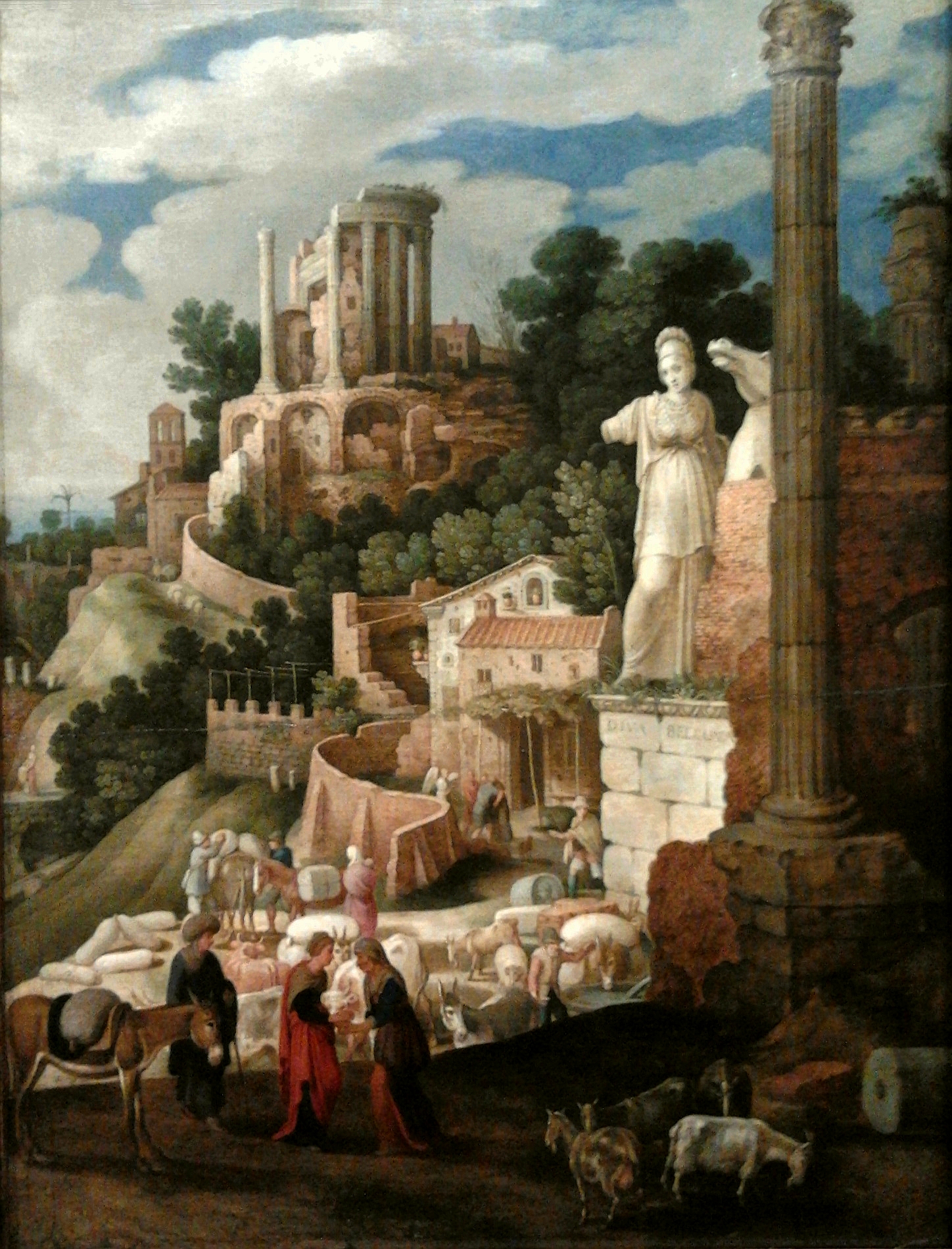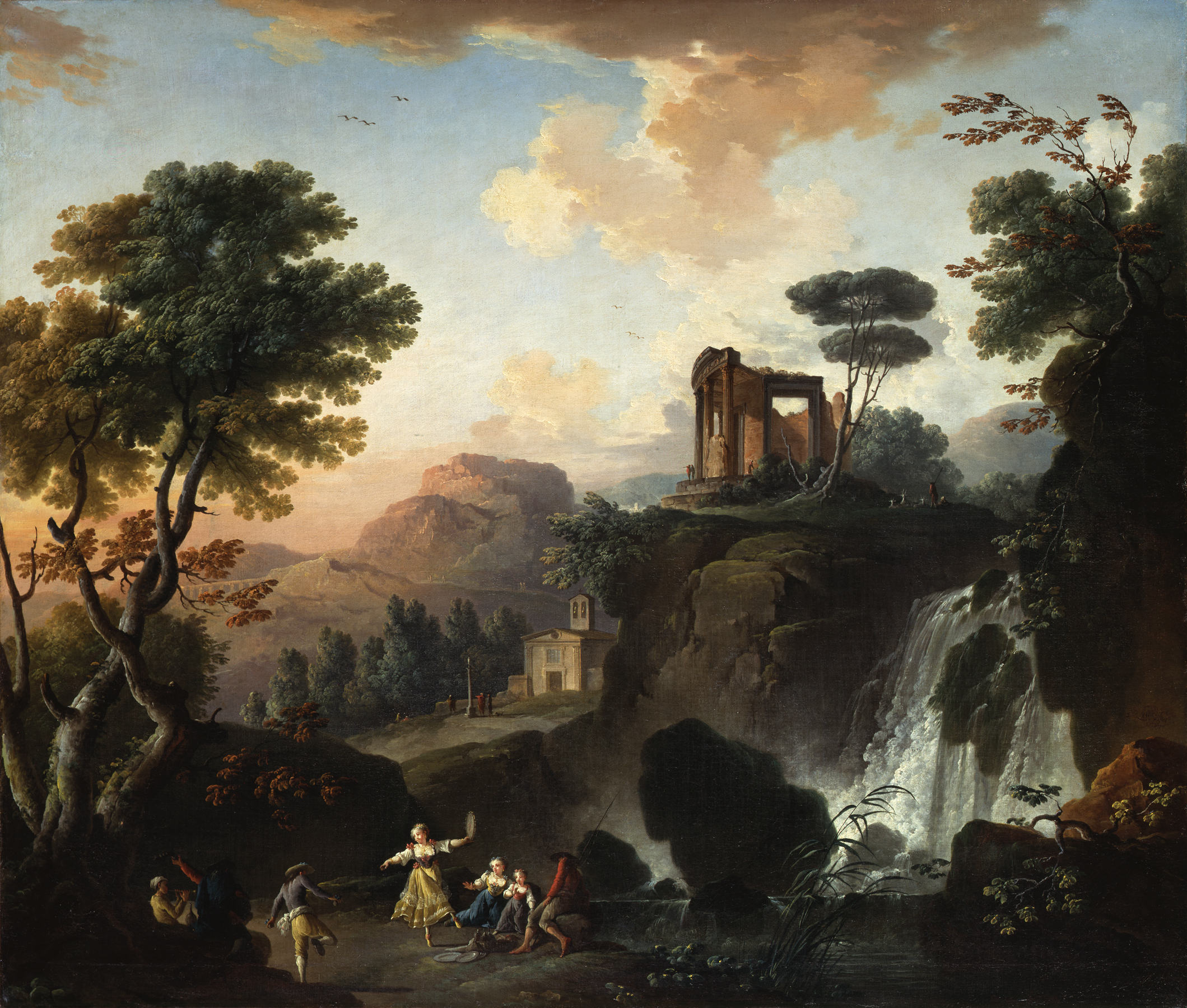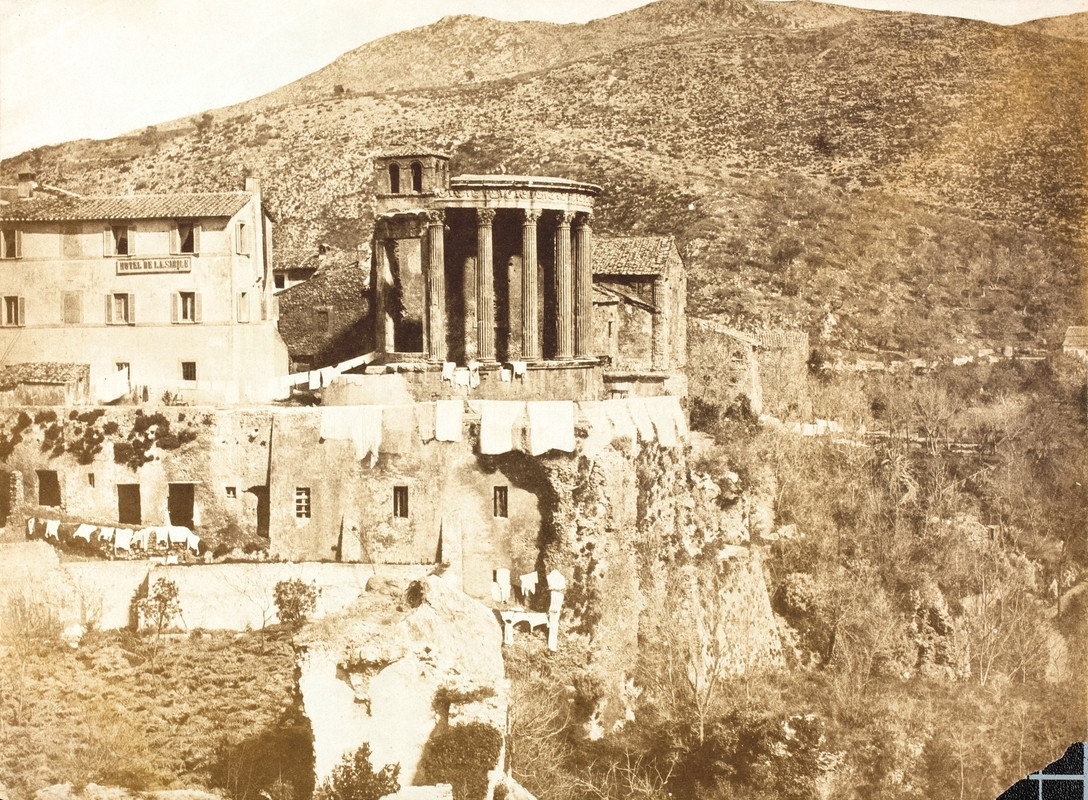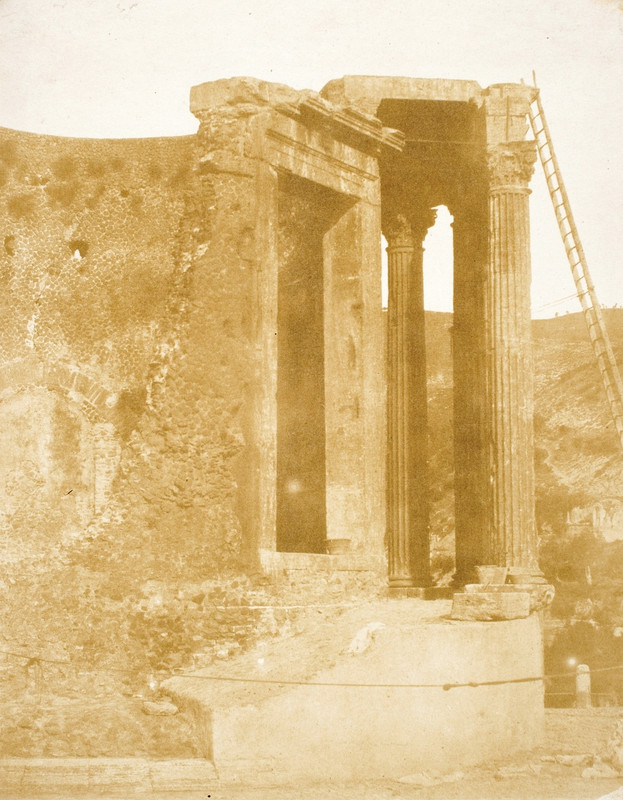It will show a scene in the ancient town of Tibur, modern Tivoli, about 20 km east of Rome. Tibur had two temples, a round one and a square one. It is often claimed that the round temple belonged to the goddess Vesta, and the square one to Tibur’s very own prophetess-in-residence, the Sybilla Tiburtina. But this is pure speculation, nobody really knows what purpose these temples served in antiquity.
I have for many years now two such models in my stack of unused stuff, and until recently I had no specific idea what to do with them. These temples were cast by Andreas Brune (Imperial Modellbau back then, now Hagen Miniatures), and it seems they are not available anymore. Fortunately, I buy every set that seems interesting as soon as it is released!
The impulse to use them for a Tibur scene came because I repeatedly came across paintings showing the landscape of the site, in particular the dramatic waterfalls. Tibur/Tivoli with its romantic landscape was one of the favorite subjects for artists during the 17th to 19th centuries, and whenever you visit a major museum or exhibition showing European classical art from that time, chances are good that you stumble across a Tivoli piece! (And the famous Tivoli Park in Copenhagen was named after the Italian town, like other such places, too. There is even a Tivoli in Texas, I have learned).
I have a small selection of paintings here, and, as you can see, sometimes the place is depicted in a quite fanciful way. And this is exactly what I will do – I do not attempt to reconstruct the topography in an exact way, it will rather be a Tivoli fantasy…
W. van Nieulandt (1614):

National Museum in Warsaw / Public domain
C. Lorrain (1644):

New Orleans Museum of Art / Public domain
C.F. de Lacroix (1764):

CC BY @ Gemäldegalerie, Staatliche Museen zu Berlin
H. Robert (1789):

Saint Louis Art Museum / Public domain
J.C. Reinhart (c. 1812):
Musée Fabre, Montpellier / Public domain




































